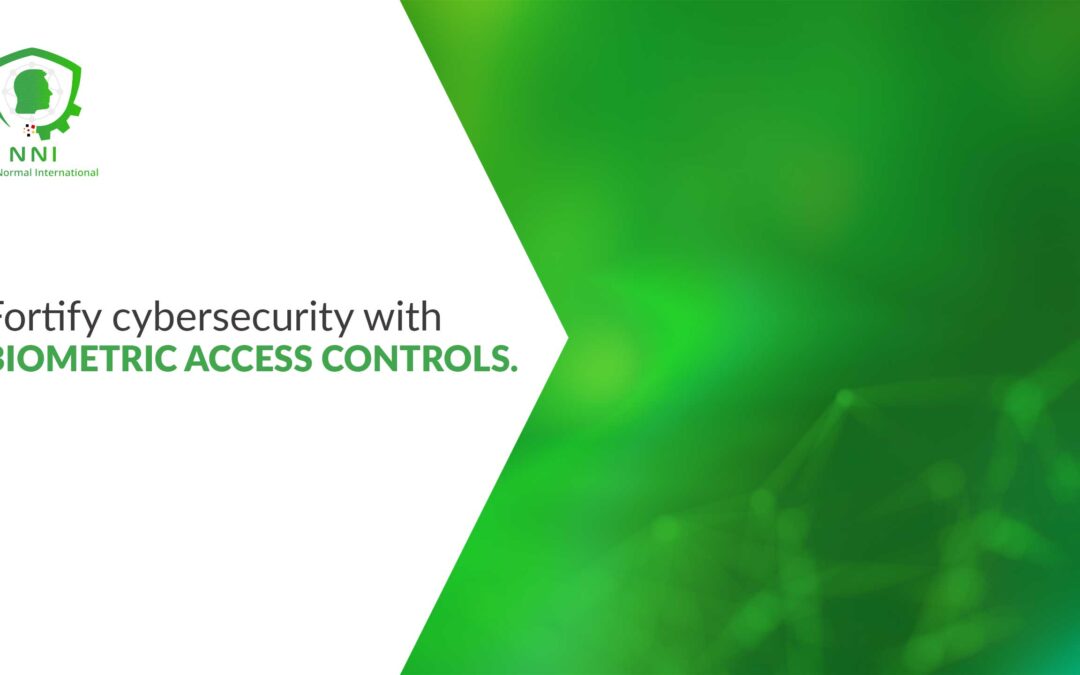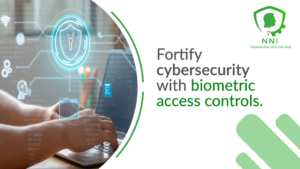Revolutionizing Security in the Digital Age with Biometrics
Fortify Cybersecurity with Biometric Access Controls has become a crucial strategy for businesses in ensuring data protection and maintaining robust security. This article aims to provide business executives, mid-level managers, and entrepreneurs with insights into the strategic integration of biometric technologies for enhanced cybersecurity.
Understanding the Role of Biometrics in Cybersecurity
Biometric technology, encompassing fingerprint scanning, facial recognition, and iris scans, has evolved beyond a mere security measure into a powerful tool for empowering seamless access and unlocking new opportunities. Unlike traditional security methods, biometrics leverage the inherent uniqueness of individual physical characteristics, creating a practically impenetrable barrier against unauthorized access. This transformative technology offers a multitude of benefits:
1. Enhanced Security and Reduced Fraud: Biometrics significantly raise the bar for security by eliminating the vulnerabilities associated with passwords and PINs. The inherent uniqueness of biometric identifiers makes them virtually impossible to replicate or forge, effectively deterring unauthorized access attempts and reducing the risk of fraud.
2. Frictionless User Experience: Biometric authentication offers a seamless and convenient user experience. Users can access systems or applications instantly without the need to remember complex passwords or fumble with physical keys. This frictionless approach enhances user satisfaction and productivity, while also reducing administrative overhead associated with password management.
3. Personalized and Adaptive Security: Biometric systems can adapt to individual user behavior and preferences, providing personalized security measures. This dynamic approach can recognize and flag deviations from typical user patterns, offering an additional layer of protection against sophisticated cyberattacks.
4. Expanded Access Control and Identity Management: Biometrics facilitate granular access control and identity management. By linking specific privileges to individual users, organizations can ensure that only authorized personnel can access sensitive data and resources, enhancing security and compliance with regulatory requirements.
5. Reduced Reliance on Physical Credentials: Biometrics eliminate the need for physical keys and cards, which can be lost, stolen, or easily duplicated. This not only enhances security but also provides a more sustainable and environmentally friendly solution for access control.
6. New Applications and Innovation: Biometric technology is opening doors to cutting-edge applications and innovation across various industries. From secure mobile payments and personalized healthcare solutions to enhanced physical security and border control systems, biometrics are transforming the way we live, work, and interact with technology.
7. Improved User Privacy and Control: Biometric systems can be configured to offer users greater control over their personal data. Individuals can choose which biometric identifiers they want to share and how they want them to be used, ensuring that their privacy and security are respected.
8. Scalability and Cost-Effectiveness: Biometric solutions are scalable and cost-effective, making them suitable for organizations of all sizes. As technology continues to evolve, the cost of implementation and maintenance is expected to decrease further, making biometrics even more accessible and widely adopted.
9. Future-Proofing Your Organization: Investing in biometric technology is a strategic move that future-proofs your organization against evolving security threats. By embracing this cutting-edge technology, you can ensure the long-term security and integrity of your data, protect your assets, and maintain a competitive edge in a rapidly changing technological landscape.
10. Beyond Security: Towards a Seamless and Secure Future: Biometric technology is not simply a tool for security; it is a catalyst for creating a more seamless, efficient, and secure future. By harnessing the power of biometrics, we can unlock new opportunities, improve user experiences, and build a foundation for a more secure and interconnected world.
Embrace the transformative potential of biometrics and embark on a journey towards a future where security and convenience go hand-in-hand. By investing in this pioneering technology and prioritizing user privacy, you can empower seamless access, enhance security, and unlock a world of new possibilities for your organization.
Advantages of Biometric Access Controls in Business
Implementing biometric access controls in a business environment offers multiple advantages. It enhances security protocols, minimizes the risk of data breaches, and streamlines access procedures. Moreover, it eliminates the vulnerabilities associated with password-based systems.
Change Management and Integration of Biometrics
Effective change management is essential when integrating biometric access controls within an organization. It involves educating staff, adapting existing security policies, and ensuring a smooth transition to the new system.
Executive Coaching for Effective Implementation
Executive coaching plays a vital role in guiding leaders through the process of implementing biometric access controls. It helps in developing effective communication strategies to address any concerns and foster acceptance among team members.
Impact of Generative Artificial Intelligence (AI) on Biometric Security
Generative AI has the potential to enhance biometric security systems by making them more adaptable and efficient. AI algorithms can learn and evolve, which can be used to improve the accuracy of biometric scans and the detection of any anomalies.
Leadership and Management Skills in Biometric Implementation
Leadership and management skills are crucial in the successful adoption of biometric access controls. Leaders must effectively manage the project, address challenges, and ensure alignment with the organization’s overall security objectives.
Staying Informed: The Importance of Business News Updates
Keeping up to date with the latest trends in cybersecurity, including advancements in biometric technologies, is essential for businesses. Staying informed allows companies to continuously improve their security measures and remain resilient against emerging cyber threats.
conclusion Fortify Cybersecurity with Biometric Access Controls
In conclusion, fortifying cybersecurity with biometric access controls is an imperative strategy for businesses aiming to protect their digital assets in an increasingly complex cyber landscape. Through strategic planning, effective leadership, and embracing technological advancements, organizations can significantly enhance their security posture.
#Cybersecurity, #BiometricAccess, #BusinessSecurity, #DigitalTransformation























